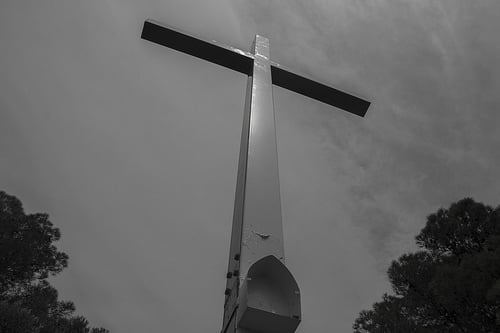The other day I strolled through the Minneapolis Institute of Art. I love this museum for several reasons: it’s always free, it’s close enough to my house that I can walk there, and the collection is interesting. I wandered upstairs and into the religious art section. (I’m a sucker for the religious art.) There, among the creepy baby Jesuses and the Renaissance paintings I had a bit of an epiphany.
But first let me back up.
One of the main criticisms of queer theology (other than that it’s “excusing sin” which (hello American Evangelicalism and their ignoring of the verses about wealth and the poor!) is that queer theologians are simply making Jesus or God into their own image. It’s a critique that’s also been lobbied against feminist theologians, Black theologians, anyone who does theology from their own context. Well, mostly anyone.
The epiphany I had in the midst of the art is this: People have always been creating art and theology that depicts Jesus in their own image. They’ve been doing it since the beginning of the church. I mean, come on, have you see the paintings of Mary and Jesus decked in crowns and renaissance robes? The paintings of Jesus with an Italian village in the background? The disciples dressed like people from the medieval era? This stuff is all over art!
And don’t even get me started on the legions of white Jesuses with blonde hair and blue eyes! I mean, we know Jesus wasn’t white and blonde, right? [To be frank, those of us who are white and American should see ourselves reflected in the Romans instead of in Jesus and his followers. We’re the occupiers who are oppressing Black and Brown bodies.]
But we make art with Jesus looking like the artist because we’re trying to make a point; the Jesus can be identified with. That Jesus knew what it was like to be human. That we can put ourselves into the scene and choose to be a Jesus follower.
Now, here’s where we get to the tricky part. It seems that no one cares that the artist has made Jesus to look like himself and his surroundings until that artist isn’t a cisgender, straight, white, man.
But the second the artist is a Black man who creates a painting of Mary as a Black mother with Jesus lying bleeding in her arms then it’s a “political statement” and he’s “distorting the Gospel.” Or a gay man who envisions the Passion narrative as speaking to the gay experience. Or a woman who talks about the feminine nature of Jesus.
Even in my own transgender passion narrative I never claimed that Jesus was transgender. I simply said that we can see some of the transgender experience within and through Jesus Passion. And yet I have been accused of belittling the story of Jesus, of making myself too important, and on and on.
Yet those same critiques are never leveled at straight, white, cisgender men.
Why?
We only hate contextual theology when it’s not written by straight, white, cisgender men because we still don’t see them as having their own context.
Straight, white, cisgender is the default. Anyone else is twisting Scripture and trying to change the image of God.
What does that say about the image of God? Oh, we know what it says: that God is a white, cis, straight, man.
We know that representation in art matters. We know that it matters that we are able to see ourselves on screens and on pages and on stages. We know that the images we have of God affect our theology at the deepest levels.
It’s just so tiring that people won’t be honest with their outrage. The reason people are upset that I wrote a transgender passion narrative is because they don’t like transgender people and don’t want to see us writing theology. The reason people hate that painting of Jesus as a Black man is because they don’t want to admit that they’re a racist who doesn’t want to follow a Black savior. The reason people think the only valid theology is by straight, white, cisgender people is because people think that only straight, white, cisgender people can speak with authority.
Instead of being angry that people are doing theology from their own context, let’s name that every theology has a context. No theology comes from nothing. It’s vital that we name the context we are writing from so that we no longer equate white/straight/cisgender as the default: not in our theology, not in our images of God, and not in our world.

